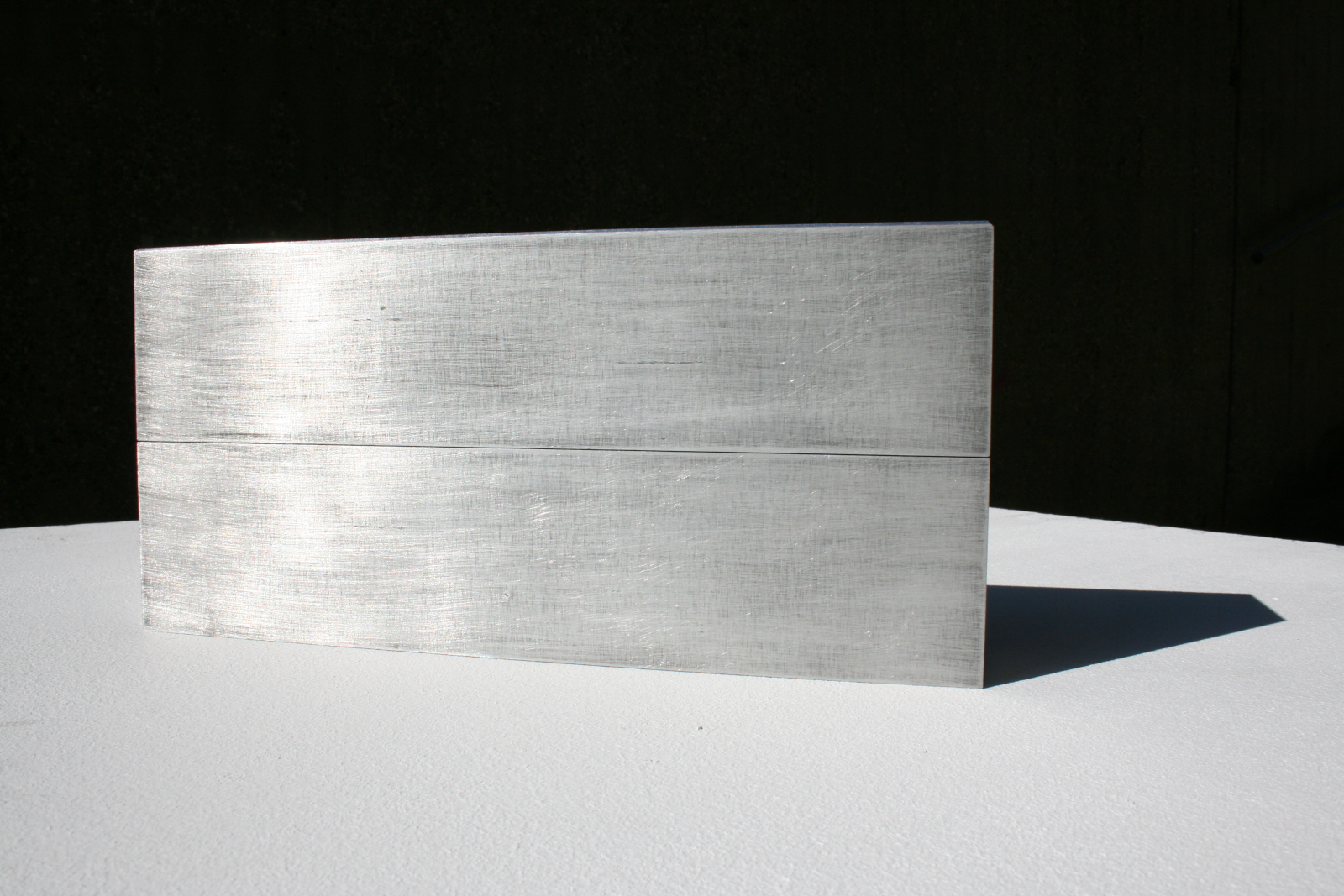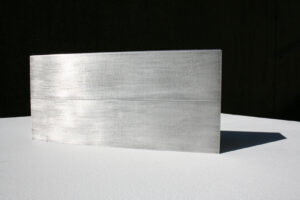
Schatulle
Object / Sculpture
Aluminium, steel, rubber · 60 × 140 × 300 mm · 7 kg
A rectangular container made of two halves, fixed with eight hex screws, forms the exterior of Schatulle. Inside are nine cylindrical elements. Each can be removed, unscrewed, and opened to reveal a hollow space. The construction is precise and durable: aluminium, steel, and rubber — water-resistant, non-magnetic, melting point of aluminium about 660 °C.
The object oscillates between functional design and sculptural artifact. It suggests utility — a protective box, a technical device, an orderly capsule system — yet its purpose remains undefined. What can or should be stored inside is left open. The voids become potential carriers of meaning, memory, secrecy, or invention.
Schatulle is defined less by its actual use than by the visions it provokes. It triggers imagination and invites projections of possible functions: scientific, artistic, performative, cultural, cinematic, or playful. It can inspire rules for a game or a script for a film. The work becomes a catalyst for stories — a prop, a tool, an archive, or an experiment. In this way, the package itself becomes the subject of reflection.
At its core lies the question of how content and value change through the act of packaging. What is protected, concealed, or made difficult to access gains new meaning simply through the way it is carried, sealed, or revealed. Curiosity intensifies, and the perception of the possible content shifts.
Thus Schatulle functions as a paradoxical vessel: massive and resistant, yet animated by emptiness that opens a space for imagination. Its true potential lies not in what it holds, but in what it sets in motion – the interpretive and creative processes of those who encounter it.
TEXT in GERMAN
Schatulle
Objekt / Skulptur
Aluminium, Stahl, Gummi · 60 × 140 × 300 mm · 7 kg
Ein rechteckiger Behälter aus zwei Hälften, die mit acht Inbusschrauben fixiert sind, bildet die äußere Form von Schatulle. Im Inneren befinden sich neun zylinderförmige Elemente. Jedes kann herausgenommen, aufgeschraubt und geöffnet werden, um einen Hohlraum freizulegen. Die Konstruktion ist präzise und widerstandsfähig: Aluminium, Stahl und Gummi – wasserfest, nicht magnetisch, Schmelzpunkt von Aluminium etwa 660 °C.
Das Objekt bewegt sich zwischen funktionalem Design und skulpturalem Artefakt. Es suggeriert Nützlichkeit – eine Schutzhülle, ein technisches Gerät, ein geordnetes Kapselsystem – und bleibt doch in seiner Bestimmung offen. Was darin aufbewahrt werden kann oder soll, bleibt unbestimmt. Die Hohlräume werden zu potentiellen Trägern von Bedeutung, Erinnerung, Geheimnis oder Erfindung.
Schattulle ist weniger durch ihre konkrete Nutzung bestimmt als durch die Vorstellungen, die sie hervorruft. Sie löst Imagination aus und eröffnet Projektionen möglicher Funktionen: wissenschaftlich, künstlerisch, performativ, kulturell, filmisch oder spielerisch. Sie kann Spielregeln inspirieren oder ein Drehbuch anstoßen. Die Arbeit wird zum Katalysator für Geschichten – Requisite, Werkzeug, Archiv oder Experiment. Damit wird die Verpackung selbst zum Gegenstand der Forschung.
Im Kern steht die Frage, wie sich Inhalt und Wert durch den Akt der Verpackung verändern. Was geschützt, verborgen oder nur schwer zugänglich gemacht wird, gewinnt neue Bedeutung allein durch die Weise, wie es getragen, verschlossen oder enthüllt wird. Der Vorgang verstärkt die Neugier und verändert die Perspektive auf das, was sich darin befinden könnte, oder wie man ihm begegnet und es bewertet.
So fungiert Schatulle als paradoxes Gefäß: außen massiv und widerständig, zugleich von einer Leere bestimmt, die Raum für Imagination eröffnet. Ihr eigentliches Potential liegt nicht im Inhalt, sondern in dem, was sie in Gang setzt – die interpretativen und kreativen Prozesse derjenigen, die ihr begegnen










